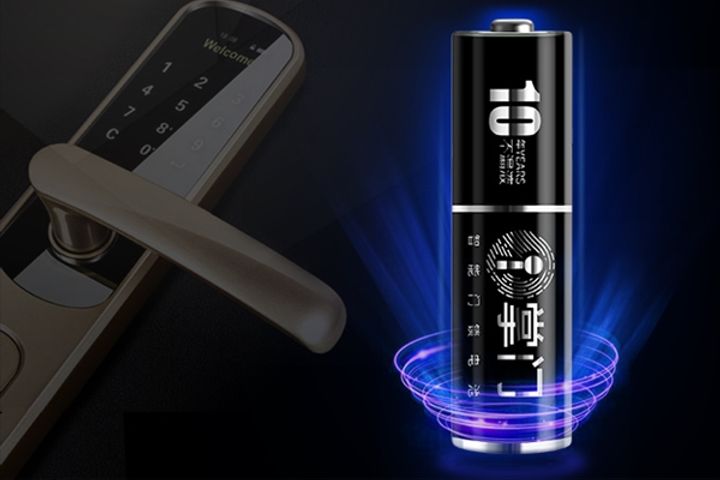Posted At: ago. 12, 2024 - 3,164 Visitas

The convenience, security, and modern appeal of smart locks have made them popular among homeowners, hoteliers, and businesses. However, a common concern many users share is the battery life of these devices. After all, without power, your smart lock becomes just another lock that requires a key.
Understanding Smart Lock Batteries
Smart locks are powered by a combination of mechanical and electronic components. The electronic part needs a power source to function correctly, typically provided by built-in batteries. The most common types of batteries used in smart locks are AA batteries (usually 5V) and lithium batteries.
Battery Life Expectations
1.AA Batteries (Dry Cells):
Most semi-automatic smart locks are powered by AA dry cells, usually requiring 4 batteries but some designs accommodate up to 8. In a typical home setting, these batteries can last about six months. The actual lifespan can vary depending on usage frequency, the quality of the batteries, and the smart lock’s technological features.
2.Lithium Batteries:
Fully automatic smart locks often use lithium batteries, which also generally last around six months. The advantage of lithium batteries is that many are rechargeable, allowing you to replenish power when the battery level is low, unlike AA batteries that require replacement.
How to Replace and Maintain Smart Lock Batteries
Replacing and maintaining your smart lock batteries is straightforward, but there are some tips to ensure a smooth process.
Replacing AA Batteries
If your smart lock uses AA batteries:
•Remove the Battery Cover Carefully: When replacing, carefully remove the battery cover. Some covers can be fragile, and mishandling could damage them.
•Match the Polarity: Ensure the positive and negative terminals are aligned correctly when inserting the new batteries.
•Reattach the Cover: Once the batteries are in place, securely reattach the battery cover.
Replacing Lithium Batteries
If your smart lock uses lithium batteries:
•Locate the Battery Compartment: The battery compartment is usually accessible by sliding a panel on the back of the lock.
•Recharge or Replace: After removing the battery, you can recharge it if it’s a rechargeable lithium battery. Once charged, reinsert the battery, ensuring it’s correctly aligned with the smart lock’s power connector.
Smart Lock Battery Maintenance Tips
1.Emergency Power Solutions:
In case of an unexpected power loss, use a portable power bank or other temporary power sources. Many smart locks have an emergency power port where you can plug in an external battery to regain access.
2.Choose Quality Batteries:
Always opt for high-quality, brand-name batteries. Avoid cheap, unbranded batteries that might leak or explode. For AA batteries, alkaline types are recommended, specifically those designed for smart locks.
3.Regular Monitoring:
Some smart locks come with a dedicated app that allows you to monitor battery usage. Regularly check battery levels to avoid getting locked out due to a dead battery.
4.Consider Backup Power Features:
Some modern smart locks have backup power features, allowing limited operation even when the main battery is depleted. However, relying on this feature should be a last resort; it’s better to recharge or replace the batteries promptly.
Understanding the battery life of your smart lock and how to maintain it ensures your smart lock continues to provide the convenience and security it was designed for. Always keep an eye on the battery levels, choose quality batteries, and follow proper replacement procedures. By doing so, you’ll enjoy a reliable and worry-free smart lock experience.

